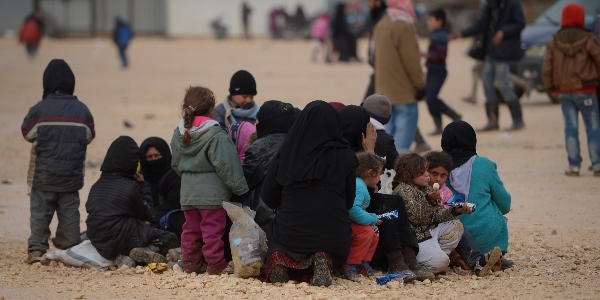
Whether they are in Washington, Ankara, Irbil or Geneva, "It’s the end of Sykes-Picot," Middle East experts and politicians often argue in discussions about the region’s future. Seeking to redraw the map of the Middle East, Sykes-Picot’s challengers are also quick to pronounce dead the post-World War I order. Ironically, both DAESH’s claim to caliphate and Kurdish nationalists’ dream of an independent state rest on the core premise that the Sykes-Picot agreement has become obsolete. Those who disagree with this assessment, too, invariably know deep inside that the Middle East will never be the same. Nowadays, American decision-makers looking to fight terrorism, regional powers fighting proxy wars and Russian generals bombing civilians all have something in common: They are updating their playbooks and reconsidering traditional alliances. A quick glance at media reports would establish that the challenges are great. On one hand, the Russians argue that Turkey is preparing to invade Syria. On the other, Kurdistan Regional Government (KRG) President Masoud Barzani says his government will hold a referendum to attain independence. At a time when superpowers and regional players seek to dictate the new rules of the game in battlefields across the Middle East, the main problem is that hardly anyone can guess what exactly will replace Sykes-Picot. To be clear, the artificial regional order sanctioned by France and the United Kingdom – the Great War’s victors – had zero chance of survival all along. In places like Iraq and Syria, the repression of the majority by artificially-empowered minorities could not last. U.S. foreign policy, however, notably expedited the process of dissolution. Arguably the most crucial development in recent years was the U.S. invasion of Iraq. Unable to replace Saddam Hussein’s regime with a functional government, Washington paved the way to sectarian clashes by putting Nouri al-Maliki, a Shiite politician with a sectarian platform, in charge. In retrospect, it was hardly surprising that the Sunni anger across the country led to the rise of DAESH. Meanwhile, Syrian leader Bashar Assad’s regime lost control of Syria by disproportionately responding to the Arab Spring revolts. In the end, violent conflicts in Iraq and Syria turned the Middle East into hell. Moving forward, the demise of nation-states in Syria and Iraq will irreversibly destroy the regional status quo. Keeping in mind that these post-Ottoman nation-states were the most successful experiments in the region, there is no reason to believe that Gulf nations will prove more persistent. To make matters worse, the Geneva-III talks established beyond all doubt that the U.S. and Russia merely pay lip service to the territorial integrity of Iraq and Syria. Having alienated Sunni Arabs to facilitate DAESH’s rise, superpowers now pave the way to a new wave of violence by working with the Democratic Union Party (PYD) and its armed wing People’s Protection Units (YPG) in northern Syria. Regional powers, to be clear, aren’t doing much better. Under the pretext of pursuing national interests, they promote sectarian clashes – a policy that won’t help create a new regional order. Their current plans, instead, are likely to create new failed states down the road. Faced with challenges to their territorial integrity, unconsolidated nation-states across the Middle East are likely to spark new conflicts. The only way out of the current crisis is to promote integration instead of disintegration. Although Turkey has been calling on regional governments to cooperate more closely, things are going south. One would only hope that the humanitarian crises in Syria and Iraq will help other governments wise up and take necessary steps before it’s too late. After all, another Sykes-Picot agreement won’t bring peace and stability to the Middle East. [Daily Sabah, February 8, 2016] |
MIDDLE EAST FILES : No Time for Another Sykes-Picot
